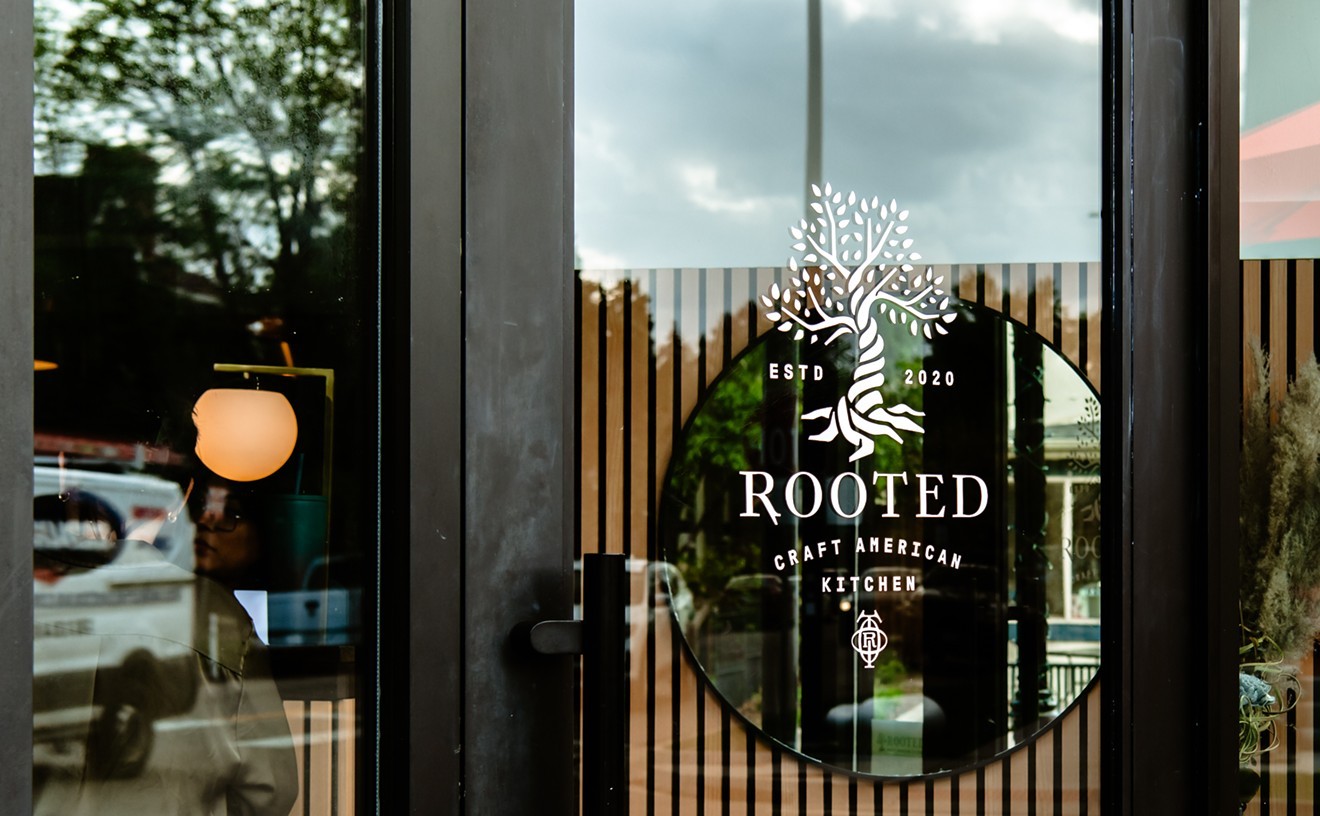Korean restaurants of all sorts are popping up around town — well, mostly in Aurora, but a new branch of the popular Dae Gee BBQ is set to open soon at 460 Broadway. Korean barbecue joints like Dae Gee are the most common Korean restaurants in Denver — and the best known among non-Koreans — but soup spots, noodle houses, Seoul-style pubs and Korean bakeries have also recently landed here.
Bibimbap has gotten so popular that you can find versions of the traditional baked-rice dish outside of Korean restaurants — Sputnik and Ace immediately come to mind. Bulgogi and other marinated and grilled meats? Even neighborhood dive Barricuda’s boasts a version on its list of dinner specials. And kimchi is everywhere: slathered on a sandwich at French-inspired rotisserie grill Brider, flavoring fries at Stout Street Social, stirred into a vegetarian stew at City, O’ City.
But where’s the Korean street food? Like it or not, this is isn’t Los Angeles, where the population is large enough to support entire Korean street-food festivals and savvy food hunters publish top-ten lists of dishes nearly impossible to find in Denver. In and around our city, you might stumble across a halfhearted attempt at the now-famous L.A.-style Korean taco, but for something more esoteric, like tteokbokki — think macaroni and cheese in terms of the dish’s broad appeal and popularity in Korea — very few options exist.
Tteokbokki is a stewy slurry of thick tteok — called rice cakes in English, but essentially super-fat rice noodles cut to the approximate size of a baby carrot — with sliced fish cake (also not exactly cake-like), veggies and other optional ingredients swimming in a vivid orange sauce based on gochujang, a fermented chile paste that will sear your tongue with both heat and salt.
Seoul BBQ on South Havana Street and Funny Plus, Aurora’s answer to the Korean drinking establishments known as hofs (based on some long-forgotten German-Asian collision most likely spawned by lager brewers), are two of very few places that serve tteokbokki in the metro area. The latter, a little late-night joint, is known more for its fried chicken, but ask for a table with a built-in burner so that you can order a simmering, two-handled tray of the fiery meal. Bring friends, because it’s a family-sized order — and make sure those friends are drinkers, because beer is the best bet for counteracting the powerful sauce.
The rarity of tteokbokki in Denver struck me as odd, considering that the dish should be cheap and easy to prepare. To test my theory, I decided to make it at home. Your best bet for finding all of the ingredients is H Mart, a Korean superstore that also carries plenty of other Asian groceries and has locations at 2750 South Parker Road in Aurora and 5036 West 92nd Avenue in Westminster.
But instead, I decided to check out E Mart, at 14301 East Exposition Avenue in Aurora, which isn’t a bad option if you happen to be close, though the market floor is cluttered and ingredients can be hard to locate. E Mart has a couple of food counters inside, too, so you can grab a quick lunch if you’re so inclined. (And if you’re really inclined, there’s a sign on the door at E Mart indicating that the whole place is for sale for $200,000, as the current owner would like to retire.) On my visit, an employee was seated at a restaurant table patiently making dumplings by the trayful.
Of the ingredients I needed, I was unable to track down the anchovy-stock powder listed in the recipe I’d found, but the others were available once I figured out where to look. Gochujang comes in different heat levels and brands, so go for one with a spice level that won’t blow your head off and read the label to make sure there’s nothing lurking inside that might surprise you. The fish cakes (called eomuk) come in several different configurations, too; I ended up with thin slices on wooden skewers, just to make my tteokbokki a little more street.
I also added more cabbage than the recipe calls for, just to balance out the salty sauce. And as a substitute for the anchovy stock, I used a teaspoon of Mexican powdered shrimp added to three cups of water (because who doesn’t have Mexican powdered shrimp in their pantry?). Here’s the recipe I came up with, based on one I found on SeriousEats.com.
Tteokbokki
Ingredients:
3 cups of anchovy stock (from stock powder), or water mixed with shrimp powder, or just plain water
3 tablespoons gochujang (red chile paste)
1 tablespoon gochugaru (red chile-pepper flakes) or regular chile-pepper flakes
1 tablespoon soy sauce, plus more to taste
1 tablespoon sugar, plus more to taste
1 pound of tteokbokki tteok (rice cakes)
3 1/2 ounces eomuk (fish cake), sliced
5 ounces cabbage, chopped
2 scallions, chopped
2 garlic cloves, minced
1 teaspoon sesame oil
1 teaspoon sesame seeds (raw or toasted)
Several hard-boiled eggs
Directions:
Pour the anchovy stock or water into a medium-sized pan and add the gochujang, chile-pepper flakes, soy sauce and sugar. Bring to a boil and reduce to medium heat until everything is dissolved. Use a pot tall enough to minimize spatters — this stuff stains.
In a separate pot, boil a few eggs (depending on how many people are joining you) to the desired level of hardness. I like a soft yolk, so I bring the water to a boil, drop in four eggs at room temperature and cook for seven minutes before transferring them to cold water.
Add the rice cakes and boil until they are soft (about ten minutes). Reduce to a simmer to thicken the sauce. Stir occasionally to prevent the rice cakes from sticking to the bottom of the pot. Add the fish cakes, cabbage, spring onions, peeled hard-boiled eggs and garlic, and simmer for an additional five minutes, or until the sauce is the consistency of tomato soup.
Season to taste with additional sugar and soy sauce (I found that the original tablespoon was more than enough). Stir in the sesame oil at the last minute and ladle the tteokbokki into bowls. Top with sesame seeds.
The dish comes together surprisingly easily and didn’t taste too far from the real deal at Funny Plus. For something similar to what’s served there, add a brick of dry ramen noodles to the mix and let it soften before serving (skip the accompanying spice packet; you’ll have plenty of salt as is).
Prepare to have fun chasing the rice cakes around with chopsticks!
[
{
"name": "Air - MediumRectangle - Inline Content - Mobile Display Size",
"component": "12017618",
"insertPoint": "2",
"requiredCountToDisplay": "2"
},{
"name": "Editor Picks",
"component": "17242653",
"insertPoint": "4",
"requiredCountToDisplay": "1"
},{
"name": "Inline Links",
"component": "18838239",
"insertPoint": "8th",
"startingPoint": 8,
"requiredCountToDisplay": "7",
"maxInsertions": 25
},{
"name": "Air - MediumRectangle - Combo - Inline Content",
"component": "17261320",
"insertPoint": "8th",
"startingPoint": 8,
"requiredCountToDisplay": "7",
"maxInsertions": 25
},{
"name": "Inline Links",
"component": "18838239",
"insertPoint": "8th",
"startingPoint": 12,
"requiredCountToDisplay": "11",
"maxInsertions": 25
},{
"name": "Air - Leaderboard Tower - Combo - Inline Content",
"component": "17261321",
"insertPoint": "8th",
"startingPoint": 12,
"requiredCountToDisplay": "11",
"maxInsertions": 25
}
]











